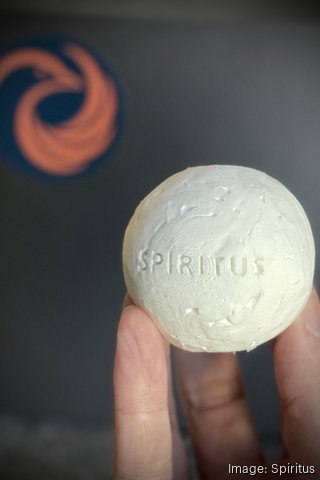
New Mexico direct air capture (DAC) technology company Spiritus announced its first pilot facility Dec. 13. Once it reaches full operational capacity, the facility located on Nambé Pueblo tribal land will be capable of delivering 1,000 tons of gross carbon removal capability.
This follows the company’s recent announcement of Garden One, the company’s first manufacturing site in Lee’s Summit, Missouri.
The New Mexico facility, yet to receive a name, will test the company’s technologies and demonstrate prototypical operation of Spiritus’ full-scale Carbon Orchards.
The company’s flagship Orchard One project, with geological sequestration in Wyoming, will demonstrate the scalability and commercialization of the company’s technology and approach to carbon removal, according to a release.
Spiritus is looking toward scaling up the facilities, like its Wyoming project Orchard One, while potentially pursuing future large-scale projects in New Mexico and beyond, according to Spiritus co-founder and CEO Charles Cadieu.
According to Cadieu, the company needed a facility that could support the next stage of scale, which includes the creation of this pilot of our Carbon Orchard, a prototypical operation that will look and behave like a future full-scale operation.
To achieve a 1,000 ton per year capacity for the orchard, the company needed substantial energy inputs and a facility of the right size, which they could move forward quickly and responsibly.
How the company landed on its new space
The company looked for a space that could support the project for quite some time as their technical team is based in New Mexico.
With the help of the company’s Nambé contacts they found a facility that would be a good fit with the right utilities to achieve the scale the company aspires to.
Following meetings with officials, Nambé officials helped the company move in within a number of weeks, which Cadieu described as “kind of a shocking and amazing thing.”
According to Carlos O. Vigil, Nambé Pueblo Development Corporation president and CEO, the board of directors for the Development Corporation approved the lease agreement, with Spiritus, and it was furthersanctioned by the Nambe Pueblo Tribal Council.
Vigil confirmed the lease terms are $850,000 over six years for warehouse space measuring approximately 10,300 square feet. It sits on an acre of Nambé Pueblo land granted to the Development Corporation, he added.
Cozette Hansen, broker with Santa Fe-based Barker Realty, represented Spiritus in the deal.
Spiritus, according to Cadieu, has 10 individuals working there today, to be scaled in the short term to 20 and in the long term to a headcount of 30 workers, all of which will support operations of the current pilot and future generations of the technology.
From technicians who will run the pilot, to highly experienced engineers and skilled labor and practitioners, many new jobs will contribute to putting the facility in place.
How the technology works, who the customers are
The technology is comprised of a Carbon Orchard on which there are artificial fruit that look a little bit like spheres that sit in the open air collecting CO₂.
The company then moves them to desorb, taking CO₂ off of the spheres for sequestration, a process where CO₂ is put underground.
This is done off-site, but spheres are then readded to it and the process is repeated.
The company has already announced some of the customers they have signed, including Stripe and Shopify, as part of the large Frontier buying conglomerate according to Cadieu, pointing to Google, Meta and JP Morgan Chase Co. as examples
“In fact, we’ve been with those contracts sold out now for our the first couple years of operation from the Nambé facility. [It’s] nice to have a position where we’re already sold out of the production quantities for the next few years,” he said.
The company’s deal with Stripe and Shopify is for about 700 tons, accounting for the majority of the company’s 1,000 tons of gross carbon removal capability in its initial year of operation.
Spiritus has more deals stacking up, accounting for the next year as well, providing needed capital up front to deliver the company’s technology into the future, according to Cadieu.
The company was recently awarded a $50,000 Science and Technology Business Startup Grant from the New Mexico Economic Development Department’s Office of Strategy, Science and Technology (OSST), and $207,636 from New Mexico’s Job Training Incentives Program, or JTIP for four trainees.
